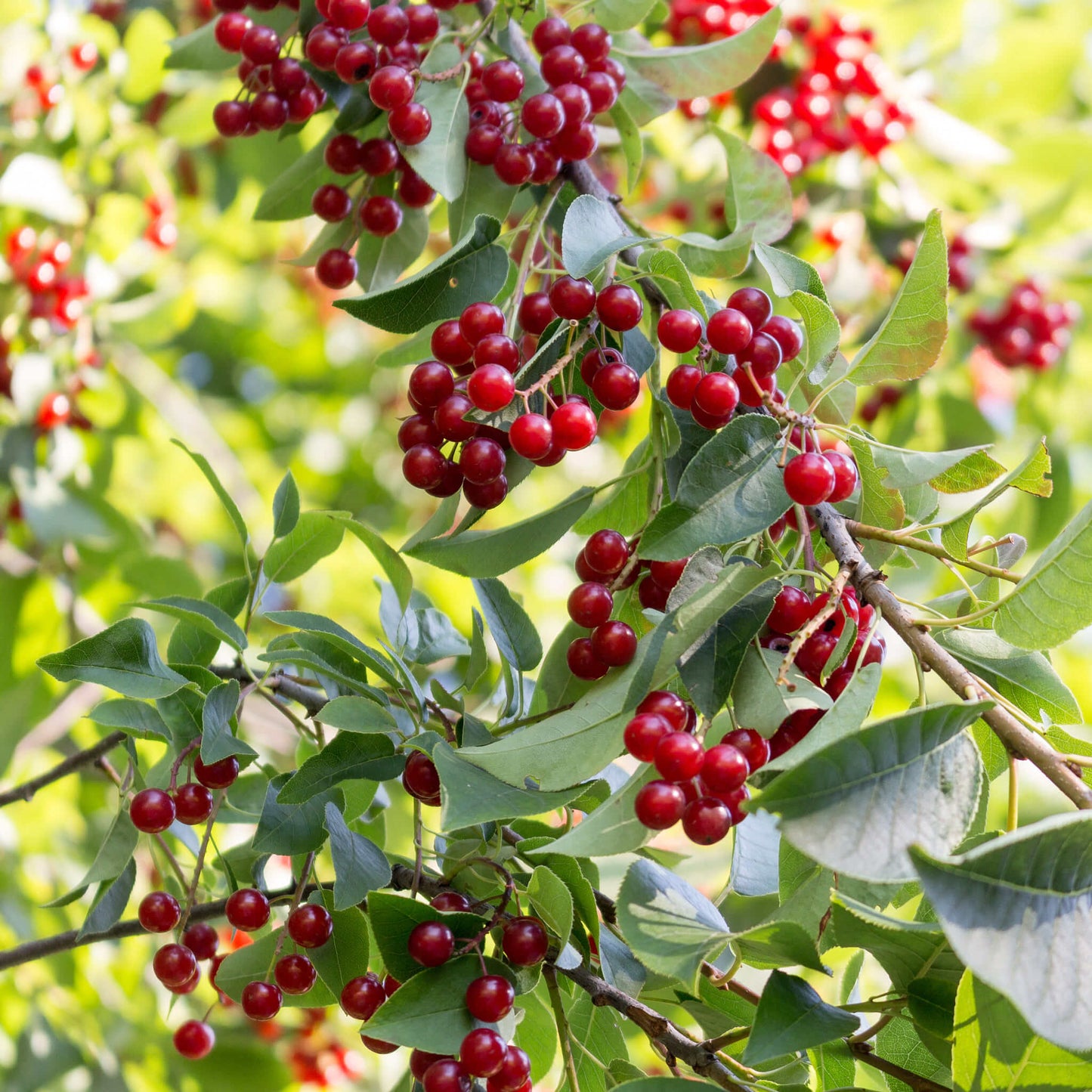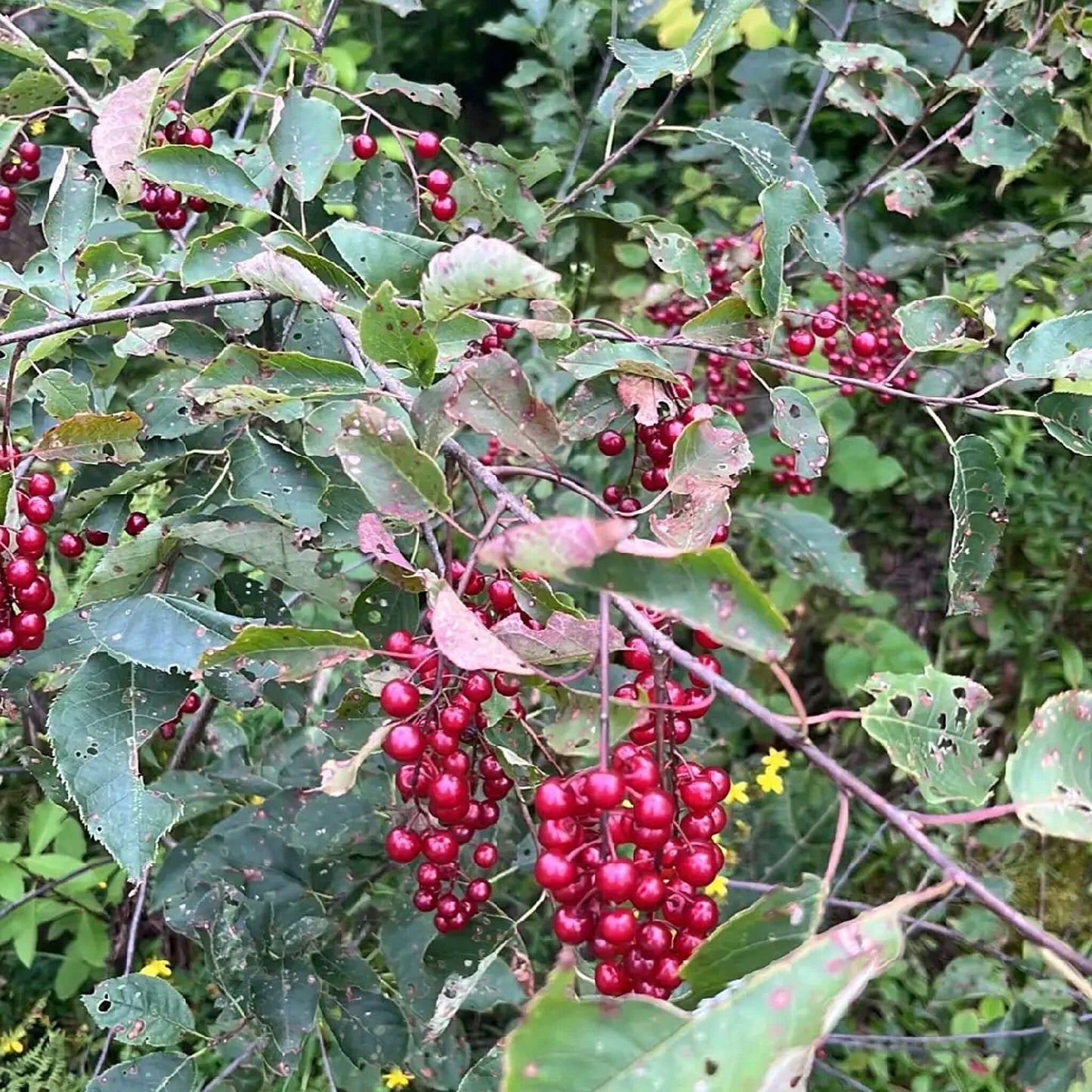For successful seedlings,
see the growing notes at the bottom of the page!
Chokecherry (Prunus virginiana) is a shrub or small tree that can reach heights of up to 6 metres, depending on growing conditions. It is characterized by its slender trunk and spreading branches covered with smooth, gray bark. Its leaves are oval, serrated, and bright green in summer, turning yellow or reddish in the fall. In spring, the chokecherry produces numerous drooping clusters of small white flowers, each cluster measuring about 10 to 15 cm long. These flowers give way to red to black fruits, commonly known as ""chokecherries."" Although astringent and bitter when ripe, these fruits are consumed by wildlife, particularly birds, and can be used in jams and jellies. This tree prefers well-drained, moist soils and tolerates a variety of light conditions, ranging from full sun to partial shade. It is hardy and withstands the harsh winters of Quebec.
Medicinal and Culinary Uses
The bark and roots of chokecherry are known to be blood tonics, astringents, expectorants, sedatives, and appetite stimulants. They have been used to treat coughs, colds, and respiratory ailments. In cooking, the fruits can be used to make jams, jellies, and syrups, often mixed with other fruits to sweeten their astringent taste. Although edible, the pits of the fruits contain small amounts of cyanide, so it is advised not to consume them in large quantities.
Ecological Role
Chokecherry is an essential plant for the biodiversity of Quebec's forest and prairie ecosystems. Its flowers attract a variety of pollinators, including bees and butterflies, while its fruits serve as an important food source for birds and small mammals. Additionally, it acts as a host plant for various butterfly species, including the Canadian tiger swallowtail (Papilio canadensis). With its dense root system, Prunus virginiana helps stabilize soils, particularly along waterways and in disturbed areas.
Chokecherry seeds require cold stratification to ensure germination. See the cultivation notes below for more details.
Akène cannot assume any responsibility for the use of plants for therapeutic purposes. Always seek advice from a professional before using a medicinal or edible plant.
Sowing and Growing
Technical Details
Seeds per packet: 25
Family: Rosaceae
Scientific name: Prunus virginiana
Life cycle: Perennial
Hardiness zone: 2
Soil type: Loamy to clayey
Soil moisture level: Dry to medium
Soil - additional attributes: Well-drained
Light: Sun, part shade
Blooming: May to June
Spacing: 400 cm
Height: 600 cm
Deer resistance: Low
Stratification: 90 days
Scarification: Soaking
Germination time: 30 to 60 days
Sowing depth: 15 mm








